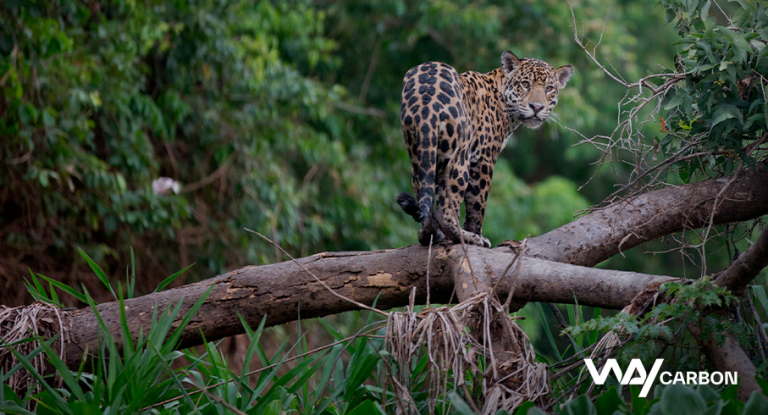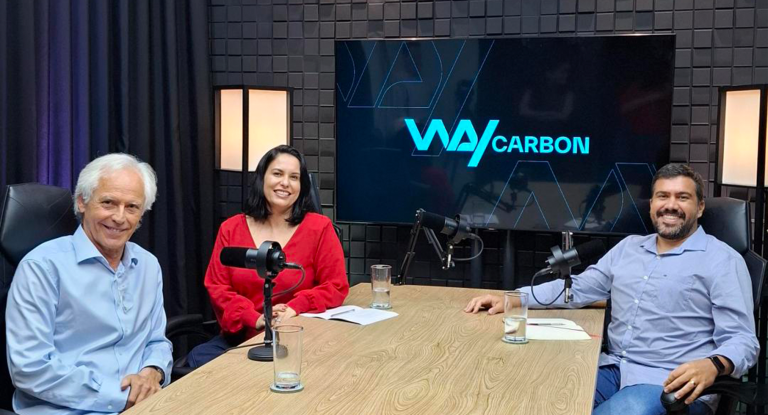COP16: Biodiversity in the spotlight

The implementation of the Global Biodiversity Framework (GBF) was one of the central themes of the 2024 edition of the United Nations Conference on Biodiversity (COP16), held in Cali, Colombia, which began on October 21 and will end on Friday, November 1. The big challenge is to address who will foot the bill for the conservation of the planet’s biomes.
Participating in the event for the first time, WayCarbon was represented by Henrique Pereira (COO) and Carlos Eduardo Benfica (Sustainability Consultant). “As the most biodiverse country in the world, home to between 15% and 20% of all global biological diversity – according to UN data, Brazil has a central role in discussions on the topic. Participation in COP 16 represents an essential opportunity to rethink its conservation policies”, analyzes Benfica.
In addition to following the discussions, Henrique Pereira participated in two panels. On October 23, he moderated the panel “Driving finance and ambition in sustainable landscapes: the role of the public and private sectors”, organized by CDP Latin America. “The panel discussed the convergences, interdependencies and responsibilities between governments and companies to manage, conserve and expand sustainable landscapes; it presented lessons learned, business cases and challenges to be overcome”, said Pereira.
On the afternoon of the 24th, Henrique addressed the “Public-Private Partnership for the Formation and Restoration of Ecological Corridors” in a panel that also included the Government of the State of São Paulo (SEMIL) and ISA CTEEP (Companhia de Transmissão de Energia Elétrica Paulista). “Although technical knowledge about planting and restoration is consolidated, the value chain of restoration projects still faces challenges of maturity and integration. (…) transforming pilot projects into concrete actions demands overcoming bottlenecks related to the implementation capacity and scalability of projects. There is an urgent need to create opportunities to implement these practices,” said the executive.
The debate “Nature and Business, integrating biodiversity into Corporate Strategies”, organized by South Pole, provided a sectoral context of the challenges and opportunities related to the TNFD (Taskforce on Nature-related Financial Disclosure) and product innovation. “The panel demonstrated how complex topics, such as biodiversity and natural capital, can be approached objectively and focused on what is relevant to operations, both from the perspective of impact and dependence,” Henrique said.
COP16 Highlights
Although some announcements were made, such as cooperation moves between countries with the aim of preserving global biodiversity, the event still awaits the advancement of discussions between heads of state and other important decision-making before its conclusion. WayCarbon has prepared a list of the highlights of the Conference so far, which will be updated when more definitions are announced:
- Implementation of the Global Biodiversity Framework undefined
After almost ten hours in the final plenary session, the Conference presidency decided to suspend the session that would define how the Global Biodiversity Framework, which was being called “nature’s Paris Agreement”, would be implemented. One of the most awaited decisions of the event was how to reach US$ 200 billion a year to meet the conservation and preservation targets set at COP15.
Negotiations ended on the morning of Saturday, November 2, exceeding the official closing date of Friday, November 1. One of the main points of impasse came when the European delegations, which are donors to the global biodiversity fund, blocked texts on resource mobilization, the commercial use of digital genetic sequences and monitoring the targets. (Reset)
- Brazilian fund
During the event, ministers from several countries expressed their support for the Tropical Forest Forever Facility (TFFF). The US$125 billion fund proposed by Brazil plans to compensate nations for keeping tropical forests standing. The vehicle is still under construction but has been praised for its innovative financial structure and environmental proposal. Announced at COP28, the expectation is that it will already be in operation for COP30, in Belém. (Reset)
- Blended Finance
Representatives of the Brazilian Business Council for Sustainable Development (CEBDS) are interested in expanding financial partnerships with the federal government for the development of the bioeconomy in Brazil. The group advocates the creation of blended finance mechanisms, such as public-private credit lines, to support products and initiatives in this market. The recommendations were delivered to Minister Marina Silva and members of the Treasury and MDIC during the event. (Estadão)
- Reports
More than 502 financial institutions and corporations have announced that they are committed to voluntarily reporting information on biodiversity following the TNFD framework. The list has increased by 57% compared to the first official announcement, made in January. (Reset)
- Restoration
The Brazilian government presented the updated version of the National Plan for the Recovery of Native Vegetation (Planaveg). This should be the country’s main tool to achieve the goal of having 12 million hectares under restoration by 2030. (Reset)
- Indigenous Alliance
Indigenous organizations from the nine Amazonian countries launched the G9 of the Indigenous Amazon in Cali. This is an alliance of entities representing 511 peoples and aims to defend the Amazon, traditional peoples, biodiversity and the global climate. The group’s first demand is to be recognized as a climate authority. (Valor Econômico)
- Indigenous now involved in decision-making
The request seems to have been heard. For the first time, the contribution of indigenous peoples and local and Afro-descendant communities to conservation has been recognized by consensus. With this decision, indigenous peoples are now part of a permanent subsidiary body with a status that guarantees them a leading role in decision-making related to biodiversity. (Agência Brasil)
Follow the main events on the climate and ESG agenda through WayCarbon’s channels:

 EN
EN  ES
ES PT
PT



